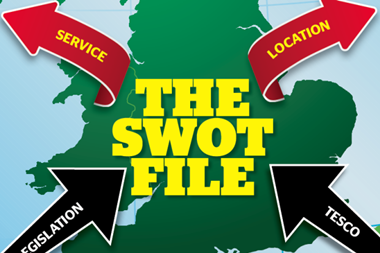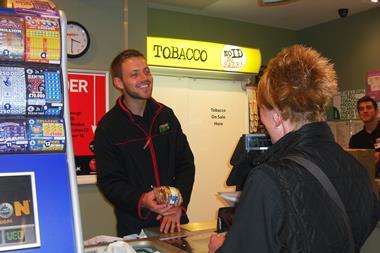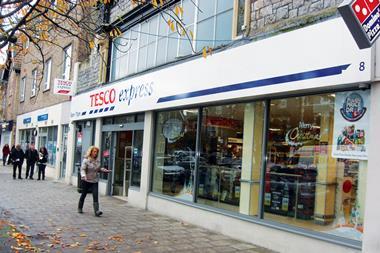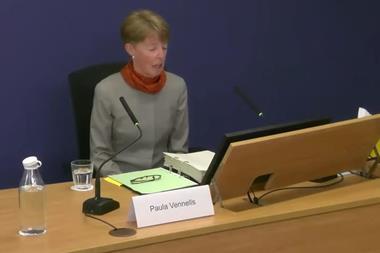Necessity, said someone a very long time ago, is the mother of invention. Or as the rapper Scroobius Pip puts it: “You see a mousetrap I see free cheese and a ******* challenge”. They might be centuries apart, but both sum up the mindset that successful convenience store retailers need when it comes to overcoming the perceived weaknesses presented by their stores.
From competing with the multiples, to the problems presented by a small space, it’s in overcoming weaknesses that convenience retailers can really display their advantage over the supermarket competition.
Generally more flexible, c-stores are often in a better position to rise quickly to challenges, leaving the big boys - with their layers of bureacracy - far behind.
RANGE
The appalling summer sales prompted some retailers to opt for more frequent deliveries to reduce stock levels and place a sharper focus on range and stock management. Retailers commenting on www.conveniencestore.co.uk have reported that they’ve had to become leaner and meaner, pulling ranging into sharper focus. Amanda Wright of Hambledon Village Shop writes: “We scrutinise every buying decision more closely than ever before.”

Ramesh Shingadia of Londis Southwater, West Sussex, says retailers have to work smarter. As a Londis retailer he downloads planograms and does a complete range review every three months. “You have to carry out your audit properly,” he says, “to look at what needs to go in, and what needs to be delisted and sold through.”
According to Roli Ranger, of Londis Ascot, Berkshire, ranging should be something that retailers think about constantly: “Range review isn’t something I do on an ad-hoc basis it’s all day, everyday.” Roli tailors his ranges tightly around his customers, inviting customer feedback. “I also pay attention to planograms and use insights from other retailers.”
And all the research points to customers wanting to see ranging done well - with a good mix of own brand, premium brands, locally sourced and fresh (source CTP 2012).
In early 2012 Roli found that expanding his high-margin fresh lines and chilled alcohol, plus creating special destination areas such as food to go, resulted in double-digit growth. His latest venture is introducing freshly made salads and baguettes.
PRICING
C-store retailers continue to battle with an uneven playing field ploughed by supermarkets selling cheaper than wholesalers, and the public’s long-held perception that convenience equals more expensive. A HIM survey from 2012 found that the majority of shoppers thought that c-stores needed to reduce their prices by 6% (although 26% said they didn’t need to at all), and 40% said that if the c-store price-matched with a multiple they would do more overall shopping there (CTP 2012).

However, some smart price mechanics can dispel negative customer perceptions. Mandeep Singh of Premier Singh’s in Sheffield maintains that retailers can compete using promotions. His policy is to buy big when stock is on promotion, keep the stock until the promotion is over, sell it at the normal price, then put it on a promotion again, but at a higher price than the previous promotion. The trick, he says, is not to run your own promotion as soon as the other one has finished.
Ramesh Shingadia says that competing successfully is a delicate balance between pricing and ranging, and that each category should have its own pricing policy: “You have to look at what you have, what will offer the margins, what is the high volume product. And remember the difference between gross profit margin and cash margins. If you can sell milk at 80p your margin may be less, but because your volume goes up your cash margins increase a lot.”
SPACE
A perceived weakness of c-stores is their size, or lack of it - presenting the problem of how to offer customers a one-stop shopping experience. Mark Canniford of Spar, Weston-super-Mare, says the key is making every square inch pay for itself. “It’s not about the size of your store. it’s how you use the space you have,” he says.
Simply by switching from standard size shelves to high-level shelving, Mark has added an additional 60m of shelf space. He’s currently looking at whether a dump bin-sized DVD booth, which he’s had in his 1,200sq ft high street store, may do better in his 600sq ft store located on a housing estate, where customers are less likely to sign up for direct debits for internet film delivery.

Playing to your key demographics can pay off for even the smallest store. Curry Mallet Stores in Somerset makes a virtue of its bijou 360sq ft form, describing itself on its website as a ‘tardis full of things both useful and lovely’. Owners Julia and Tim Langley have utilised every corner, but have resisted the urge to try to be all things to all people, paring down their offering to necessities. Small touches such as a hessian card display that Julia made to hang flat against the wall, negating the need for a card stand, make the store feel cosy rather than cramped.
Even larger stores can be face with a spacial challenge, though, something which James Brundle of Spar Walthamstow, London, recognised when he realised his ovens could be used for more than bread. The store has five separate ovens which are now used for baking bread, pizzas and ready meals. James estimates that the ovens alone account for sales of about £8,000 a week. Not bad for an area which, including the prep area, takes up about 10% of the store.


























No comments yet